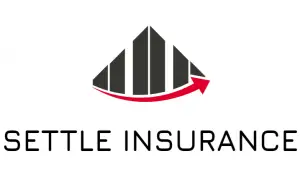“This post may contain affiliate links, if you click a link we may earn a commission if you purchase from that merchant.”
Car insurance is a necessity for every driver. It provides financial protection in the event of an accident, theft, or damage to your vehicle. However, many people make common mistakes when purchasing car insurance that can cost them money and leave them underinsured. In this article, we will discuss these mistakes and provide tips on how to avoid them.
Table of Contents
Key Takeaways
- Shopping around for car insurance can save you money
- Understanding the different types of auto insurance coverage is crucial
- Deductibles can greatly impact your insurance rates and out-of-pocket expenses
- Your driving record can affect your insurance rates
- Asking for discounts can lower your car insurance premiums
Not Shopping Around for Car Insurance
One of the biggest mistakes people make when purchasing car insurance is not shopping around for the best rates. Many people simply renew their policy with the same company year after year without considering other options. However, by not shopping around, you could be missing out on significant savings.
There are many benefits to shopping around for car insurance. First and foremost, you can compare quotes from different companies to find the best rates. Each company uses its own formula to calculate premiums, so rates can vary widely. By comparing quotes, you can ensure that you are getting the best deal.
To compare car insurance quotes, start by gathering information about your vehicle and driving history. Then, visit the websites of different insurance companies or use an online comparison tool to get quotes. Be sure to provide accurate information to get an accurate quote. Once you have several quotes, compare the coverage and rates to determine which policy is the best fit for your needs.
Failing to Understand the Different Types of Auto Insurance Coverage
Another common mistake people make when purchasing car insurance is failing to understand the different types of coverage available. There are several types of auto insurance coverage, each with its own purpose and level of protection.
The most basic type of coverage is liability insurance, which covers damage to other people’s property and injuries they may sustain in an accident that is your fault. This coverage is required by law in most states.
Collision coverage pays for damage to your vehicle in the event of a collision with another vehicle or object, regardless of who is at fault. Comprehensive coverage, on the other hand, covers damage to your vehicle from non-collision events such as theft, vandalism, or natural disasters.
It is important to choose the right coverage for your needs. If you have a newer or more expensive vehicle, you may want to consider comprehensive and collision coverage to protect your investment. If you have an older vehicle that is not worth much, you may be able to save money by opting for liability coverage only.
Overlooking the Importance of Deductibles
When purchasing car insurance, many people overlook the importance of deductibles. A deductible is the amount of money you must pay out of pocket before your insurance coverage kicks in. Choosing a higher or lower deductible can affect your insurance rates.
A higher deductible means you will have to pay more out of pocket in the event of a claim, but it can also lower your insurance premiums. On the other hand, a lower deductible means you will have to pay less out of pocket, but it can result in higher premiums.
When deciding on a deductible, consider your financial situation and how much you can afford to pay out of pocket in the event of an accident. If you have enough savings to cover a higher deductible, it may be worth choosing a higher deductible to save money on your premiums. However, if you would struggle to come up with the funds for a higher deductible, it may be better to choose a lower deductible and pay slightly higher premiums.
Not Considering the Impact of Your Driving Record on Insurance Rates
Your driving record plays a significant role in determining your car insurance rates. Insurance companies use your driving record to assess your risk as a driver and determine how likely you are to file a claim. If you have a history of accidents or traffic violations, you may be considered a high-risk driver and face higher insurance premiums.
To improve your driving record and lower your insurance rates, practice safe driving habits. Obey traffic laws, avoid speeding, and don’t drive under the influence of drugs or alcohol. If you have a history of accidents or violations, consider taking a defensive driving course to demonstrate your commitment to safe driving.
It is also important to note that insurance companies typically look at your driving record for the past three to five years. If you have a clean driving record during this time period, you may be eligible for lower rates. However, if you have recent accidents or violations on your record, it may take some time for your rates to decrease.
Forgetting to Ask for Discounts
Many people forget to ask for discounts when purchasing car insurance, which can result in higher premiums. Car insurance companies offer a variety of discounts that can help you save money on your policy.
Common discounts offered by car insurance companies include safe driver discounts, good student discounts, multi-policy discounts, and low mileage discounts. Safe driver discounts are typically given to drivers with a clean driving record and no accidents or violations in a certain period of time. Good student discounts are available to students who maintain a certain grade point average.
Multi-policy discounts are offered to customers who have multiple policies with the same insurance company, such as auto and home insurance. Low mileage discounts are given to drivers who drive fewer miles per year, as they are considered less likely to be involved in an accident.
To qualify for these discounts, be sure to ask your insurance company about any available discounts and provide any necessary documentation. For example, if you are eligible for a good student discount, you may need to provide proof of your grades.
Opting for the Minimum Coverage Required by Law
Another mistake people make when purchasing car insurance is opting for the minimum coverage required by law. While this may save you money in the short term, it can leave you underinsured in the event of an accident.
The minimum coverage required by law typically only includes liability insurance, which covers damage to other people’s property and injuries they may sustain in an accident that is your fault. However, it does not cover damage to your own vehicle or injuries you may sustain.
To determine the right amount of coverage for your needs, consider the value of your vehicle and your financial situation. If you have a newer or more expensive vehicle, you may want to consider comprehensive and collision coverage to protect your investment. If you have significant assets or savings, you may also want to consider increasing your liability coverage to protect yourself in the event of a lawsuit.
Not Reviewing Your Policy Annually
Many people make the mistake of not reviewing their car insurance policy annually. However, it is important to review your policy on a regular basis to ensure that your coverage is up-to-date and meets your needs.
Life circumstances can change over time, and your insurance needs may change as well. For example, if you have recently purchased a new vehicle or added a driver to your policy, you may need to adjust your coverage. Additionally, changes in your driving record or credit score can also affect your insurance rates.
When reviewing your policy, consider factors such as the value of your vehicle, any changes in your driving habits, and any new drivers or vehicles that need to be added to the policy. If you have made any significant changes, contact your insurance company to update your policy.
Failing to Disclose All Drivers and Vehicles on the Policy
Failing to disclose all drivers and vehicles on your car insurance policy can have serious consequences. If you fail to disclose a driver or vehicle on your policy and they are involved in an accident, your insurance company may deny coverage.
When purchasing car insurance, be sure to provide accurate information about all drivers in your household and all vehicles that will be covered by the policy. This includes teenage drivers who may not have their own vehicle but will be driving your vehicle.
If you need to add a driver or vehicle to your policy after purchasing car insurance, contact your insurance company to update your policy. Failure to do so can result in a denial of coverage and leave you financially responsible for any damages or injuries that occur.
Making Assumptions About Coverage for Accidents and Claims
Many people make assumptions about what is covered by their car insurance policy in the event of an accident or claim. However, it is important to understand what is and isn’t covered by your policy to avoid surprises.
For example, many people assume that their car insurance will cover the cost of a rental car if their vehicle is in the shop for repairs. However, rental car coverage is typically an optional add-on that must be purchased separately.
Additionally, some people assume that their car insurance will cover the full cost of a new vehicle if their current vehicle is totaled in an accident. However, insurance companies typically only pay the actual cash value of the vehicle at the time of the accident, which may be less than what you owe on the vehicle.
To avoid these assumptions, carefully review your car insurance policy and ask your insurance company any questions you may have. If there are any gaps in coverage or additional coverage options you would like to add, discuss them with your insurance agent.
Not Understanding the Fine Print of Your Car Insurance Policy
Many people make the mistake of not reading or understanding the fine print of their car insurance policy. However, it is important to read and understand your policy to avoid surprises in the event of an accident or claim.
The fine print of your car insurance policy contains important information about your coverage, deductibles, exclusions, and limitations. It also outlines the process for filing a claim and any deadlines or requirements that must be met.
When reading your car insurance policy, pay close attention to terms such as “exclusions” and “limitations.” Exclusions are situations or events that are not covered by your policy, while limitations are restrictions on coverage. For example, your policy may exclude coverage for damage caused by a flood or earthquake, or it may have a limitation on coverage for rental vehicles.
If you have any questions or concerns about the fine print of your car insurance policy, contact your insurance company for clarification. It is better to ask questions and fully understand your coverage before an accident or claim occurs.
In conclusion, there are many common mistakes people make when purchasing car insurance. By avoiding these mistakes and being an informed consumer, you can choose the right coverage for your needs and save money on your premiums. Remember to shop around for the best rates, understand the different types of coverage available, consider the impact of your driving record on insurance rates, ask for discounts, review your policy annually, disclose all drivers and vehicles on your policy, understand what is and isn’t covered by your policy, and read and understand the fine print of your car insurance policy. By following these tips, you can ensure that you have the right coverage in place to protect yourself and your vehicle.
If you’re in the market for car insurance, it’s important to avoid making common mistakes that could end up costing you in the long run. One mistake to watch out for is not comparing car insurance rates from different providers. By doing so, you may miss out on potential savings and better coverage options. In a related article on Settle Insurance, they discuss the importance of comparing car insurance rates and provide tips on how to do it effectively. Check out their article on how to compare car insurance rates to ensure you’re getting the best deal possible.
FAQs
What are the top 10 mistakes people make when buying car insurance?
The article lists the following mistakes: not shopping around, not understanding coverage options, choosing a high deductible, not disclosing all drivers, not disclosing all vehicles, not considering the value of the car, not considering the location, not considering the driving record, not asking about discounts, and not reviewing the policy annually.
Why is shopping around important when buying car insurance?
Shopping around allows you to compare rates and coverage options from different insurance companies, which can help you find the best policy for your needs and budget.
What are some common coverage options people may not understand?
Common coverage options that people may not understand include liability, collision, comprehensive, uninsured/underinsured motorist, and personal injury protection.
Why is choosing a high deductible a mistake?
Choosing a high deductible can lower your monthly premium, but it also means you’ll have to pay more out of pocket if you get into an accident. This can be a financial burden, especially if you don’t have enough savings to cover the deductible.
Why is it important to disclose all drivers and vehicles?
Insurance companies need accurate information about all drivers and vehicles that will be covered under the policy in order to provide the appropriate coverage and calculate the premium.
Why is the value of the car important to consider?
The value of the car can affect the cost of insurance, as well as the type of coverage you need. For example, if you have a new or expensive car, you may want to consider comprehensive coverage to protect against theft or damage.
Why is the location important to consider?
The location where the car will be primarily driven and parked can affect the cost of insurance, as well as the type of coverage you need. For example, if you live in an area with high rates of car theft, you may want to consider comprehensive coverage.
Why is the driving record important to consider?
The driving record can affect the cost of insurance, as well as the type of coverage you need. For example, if you have a history of accidents or traffic violations, you may be considered a higher risk and may need more coverage.
Why is it important to ask about discounts?
Insurance companies may offer discounts for things like safe driving, multiple policies, or certain safety features on your car. Asking about discounts can help you save money on your premium.
Why is it important to review the policy annually?
Reviewing the policy annually can help ensure that you have the appropriate coverage for your needs and that you’re not paying for coverage you don’t need. It can also help you identify any changes in your situation that may affect your insurance needs.



































